Mount St. Helens, Mount St. Helens National Volcanic Monument
February 20, 2010
The rubber soles of my trail runners made a satisfying crunch in the dark forest at the base of the mountain. My pace deliberate, unhurried, methodical. Since being hit by a truck while riding my bicycle in November I had been kept from the mountains, kept from the natural world, kept away by a broken leg and damaged muscles, ligaments, tendons, sinews. The crunch echoed slightly in the darkness. A satisfying sound.

I had gone on short hikes on trails, but this was my first time on snow, off trail, and on my own. My Tacoma friends were busy, Shauna was in California, and I was on my way up Mount Saint Helens, free for a little while. My time in the outdoors has been frequently filled with good friends, people that I rely on, whose company I enjoy, people that mean something to me. But today was all about me. An opportunity to think for a while and to experience Nature without the constraints of another mind close by.
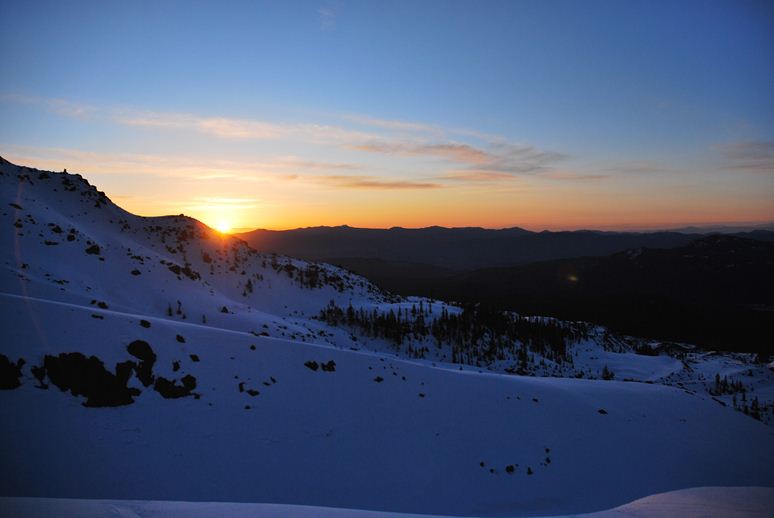
The sun slowly came up, illuminating the snowy slopes with a delicate pink glow that slowly changed to red and then to orange. The only good thing about an alpine start is the sunrise. It's hard to think of a better show than sunrise on a Pacific Northwest volcano. Maybe sunset in the Mojave. Maybe. I was moving effortlessly uphill. Sweat was moving, lungs expanding, legs pumping. But there was no effort.
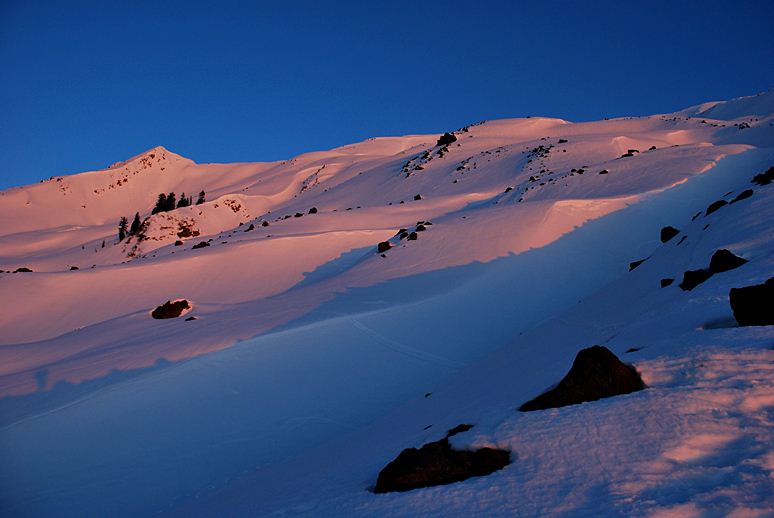
I hiked to 4500 feet in my trail runners and then hid from a cold wind behind a boulder and changed into my plastics and crampons. It had been a while they'd been on my feet and I moved uphill with a clumsy gait as my body struggled, for the moment, to regain its balance. There were others on the mountain, but I had already passed a dozen other climbers and had my sights on five more in front of me. I wasn't racing, but the notion of having the summit to myself was an appealing one and I found myself taking a direct line up the mountain, cramponing quickly on the hard pack.
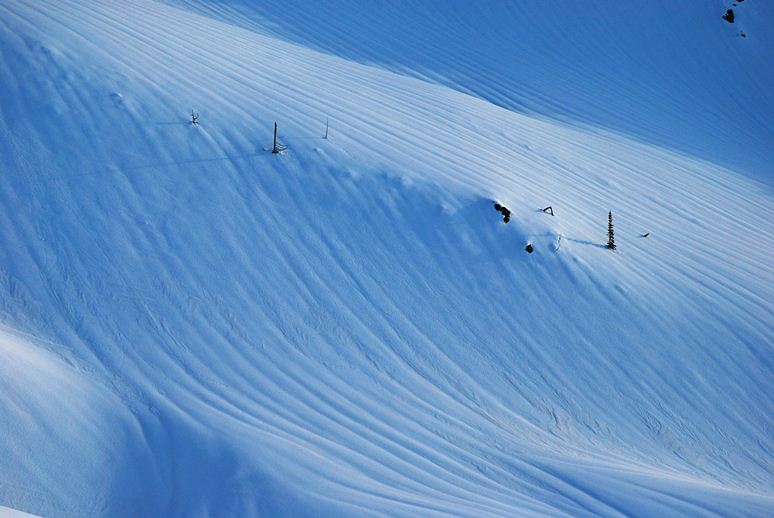
The human body is the most remarkable machine I can think of, and I spend a lot of time thinking. Just three months ago I had been hit by a 5000 pound vehicle traveling at 60 miles per hour. I didn't need a cast nor surgery, and yet I was back teaching five days later, back hiking, slowly, in three weeks. I couldn't walk far at first, and I tired easily, but my strength seemed to come back at a geometric rate. The body healed itself. I just had to let it.
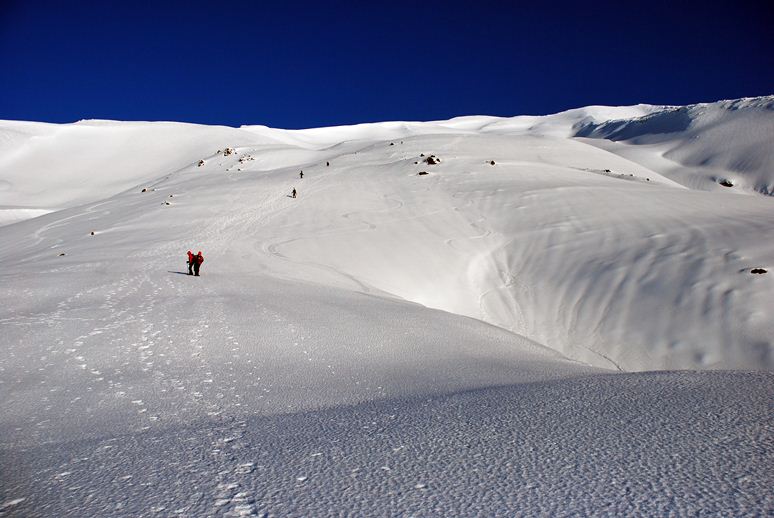
I passed a hiker, and then another. And another. On a final steep pitch I passed the last one I would. There were three people already on the summit, but when I reached the top they were on their way down. I was alone on top, alone except for what I brought up there with me. A man died here a week ago. On this mountain, at this spot. I hoped he had lived well. That really is important. How you live is important, not just what you happen to be doing at the moment, or what you talk about. The doing of the little things. That is the important point. The big picture is largely unimportant. Mount Rainier sneered at me.

Mount Adams was to my left, as was a massive drop off into the crater. That was where the man's corpse had been recovered. I ate a bit of landsjager and tried not to think about how cold I was getting in the blowing wind. I had been on the move for four hours with only a short break to change into the boots. I was dehydrated, underfed, and cold. And happy. It isn't that I like suffering. I try to avoid it as much as possible. But rather the joy of being in a beautiful place with a once-again healthy body made the physical discomfort seem like a good thing.
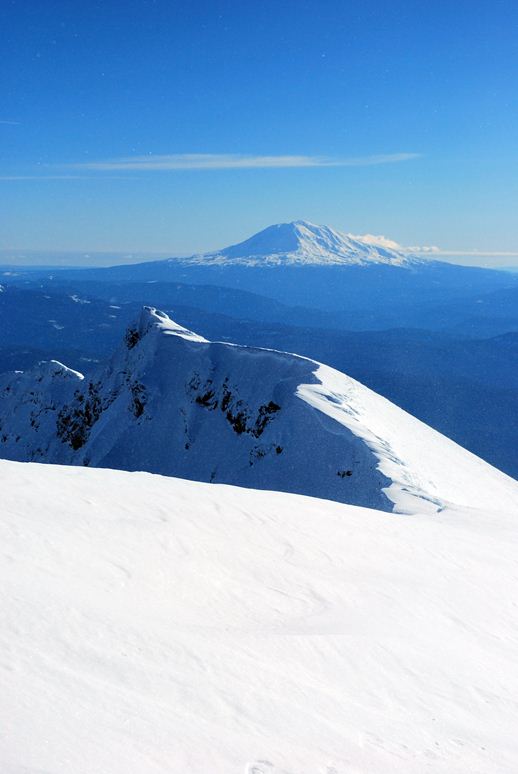
Hoards of hikers, skiers, and snowboarders were on the way up. I had a three hour drive home and a date with a steak and a beer to make. I had made my point to myself. I was ready to get back into the outofdoors, back into the wild. A part of my life that had been sealed up was open once again and I felt more whole than I had since November. Since, really, July.

The cold, biting wind drove me from the top just as a group of climbers reached it. I dawdled on the descent, lingering on the mountain, unwilling to leave. There were many, many people on their way up. But as I neared the trees I was alone once again and a final glance at Mount Hood brought back a flood of memories about the PCT. And images of the future. But that is something, literally, for another time.
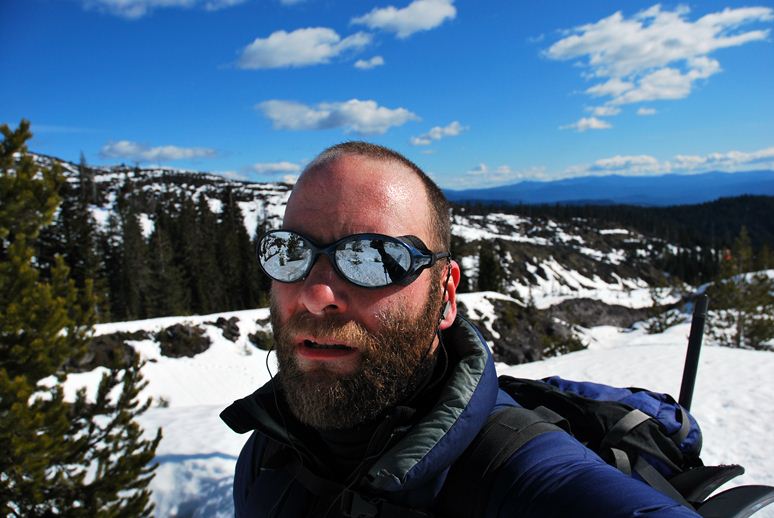
Logistics
Drive I-5 south to the town of Woodland (mile 21), where you'll pick up SR 503. Drive this for about 25 miles or so to the town of Cougar. On the left is a motel where you can register and get a free permit to climb in the winter time. Outside of the winter months there is a lottery and a quota and you'll have to pay $22 to climb. Conditions are terrible in the summer (hot, shadeless, endless scree and dust), so do yourself a favor and go up in the winter time. From Cougar, continue on SR503 into the monument and follow the signs for the Marble Mountain Sno Park. Do not go to the Climbers Bivuoac: That is for the summer route. You'll need a Sno Park pass to park here. The route is easy to follow and there are posts on the lower stretch to help guide you. You'll follow a small spur ridge up to the crater top. The route gains about 6200 feet in 8 miles, so it is a bit of a grunt. I took exactly 4 hours, including one short break, to summit, but 6-8 hours is more realistic for most people. There are a few steep snow pitches, but the consequences are low if you fall. However, stay well back from the crater rim unless you can see rock: There is a big cornice there and a man died the week before I climbed when the cornice he was standing on collapsed as he posed for a picture.









